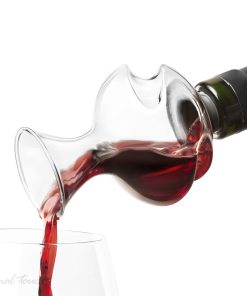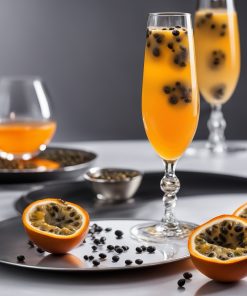Food and beverages are diverse and complex and the goal is to provide pleasure. Everybody can relate to the idea of the pleasure of eating or drinking something delicious. It’s enjoying what we like and not what we don’t. Certainly, there are so many factors that influence this experience, positively or negatively. The right drink can enhance a dining experience and the wrong drink can ruin an entire meal. There is a science behind pairings that has to do with all sorts of factors from the environment, climate, temperature of the drink, of the dish, but also the environment, the emotional status of the person, culture, palate’s taste, the ambience, the occasion, the season, the quality and aspect of the food and also the quality of the service, texture, regionally.
This concept can be applied not just for wine-food but also a pairing that consists of food and: water, spirits, coffee, tea, oil, and obviously cocktails. You obtain a great result when the food chosen is paired with the drink in order to put both of them in evidence without fighting the other; the food makes the drink taste better and the drink makes the food taste better. Pairing food and drink is not as simple as it was 20 or 30 years ago, when it was primarily a wine red or white or from Italy or France. Serve red wine with red meat is a classic but following the evolution of the cuisine, you must follow not just the primary ingredient but also the sauces/seasoning (porcini mushroom works fantastic with a big red, but if the mushrooms are chanterelle – dry white wine). There has always been fear of drinking cocktails and mixed drinks with that ‘high class’ meal- or any meal for the matter.
There are some bits of advice and suggestions: For sure it comes to your senses; let them guide your choices. Food and beverage pairing is all about listening to what your eyes, nose, mouth, and brain tell you. Think if you want to go for comfort or adventure. Unconventional combinations, why not? Consider the occasion as well.
Think regionally: if grows together, it goes together. If you go on a holiday in a specific region you will try their food and their drinks. Understanding regional pairing is such an important rule of the sommeliers. Thinking regionally can open your mind to new possibilities and it will be easier to pair as well. In the sake example, the Japanese drink fit Japanese cuisine. Tequila and Mexican inspired meal.
Consider body when pairing drinks, pay attention not only to flavour but also to the mouthfeel. For example, apple juice has a whole different body than tomato juice, which is different than seltzer. A full-bodied wine with dessert. It is the same for the cocktail. A full-bodied cocktail for the end of the meal. Impact body and alcohol. Everything you eat and drink has an impact. The body, think of milk: light like skimmed milk, medium-bodied like a semi-skimmed, and a full-bodied like to a whole one or a cream. One thing that affects the body and the impact of wine and beer is the alcohol level. If the food is very delicate, consider choosing a lower alcohol drink to keep things in balance.
Texture. A dish’s texture and temperature will also have a bearing on its perfect pairing. Crispy dishes are often fried, calling for a bubbly beverage such as champagne or other sparkling wine, or beer. Serve to refresh the palate. The cooking technique affects the texture and temperature of a dish. Tuna can be served raw as sushi or hot off the grill, each had a different flavour, temperature, texture, and pairing implications.
The consistency of a drink also plays into pairing decisions. Take for example thicker cocktails made with liqueurs generally don’t go well with red meat or rich sauces. Frozen cocktails can overwhelm the palate, while carbonated cocktails pair well with full-flavored foods.
Brightness, acidity/sourness. One tool you have for picking drinks that go well with food is acidity. In a cocktail, this could come from lemon or lime juice, vinegar. Some wines have more bright acidity than others. In beers, brightness can come from hops that offer citrus or fruity character to the brew. Sour Belgian or Flemish style beers offer acidity in spades. Acidity can contrast richness in your food, like a squeeze from a lemon wedge can help a plate of fried clams. Fat can coat your tongue, acidity can cleanse it and refresh your mouth. Use this tool to your advantage. For example with a salad, a Riesling because is a little sweet, has nice acidity, and is very fruity. Just like a Sidecar. Beer is low in acid so, for this reason, goes very well with a low spicy food.
The carbonation helps to clean the palate when you are eating a rich dish, refreshing your mouth for another bite.
Tannins in wine come from the skins, stems, seeds, or oak barrels. Tea has the same thing. In a big red wine, the tannins help the wine to go with meat, softening the fat and the protein. The fat and the protein help calm the harshness of the tannin. With the spicy food, the tannins can accentuate their presence, so the pairing is not going to be great.
Sweetness is intended not just like cake or cookies but also the sauces that come with a main such as BBQ sauce, caramelized onion, etc. An off-dry wine or a beer with a touch of residual sugar and malty sweetness, will bring out the best in these dishes and not be overshadowed. The basic rule for pairing for dessert is to go sweeter with your drink than your food, as the sweetness in food increases the perception of bitterness, acidity, and the burning effect of the alcohol and at the same time decrease the perception of body, sweetness, and fruitiness in the drink. Dry champagne and wedding cake? Simply no!!! On the opposite side, salty food will increase the perception of the body in drinks and decrease the perception of bitterness and acidity in the drinks. The mix of sweet and salty is a subjective pleasure. One of my all-time favourites is blue cheese and sweet wine.
Umami. Glutamate and malt are found in the beer and work great with umami and earthy food flavours. Sherry- olive is an umami bomb and keep in mind that umami in food will increase the perception of bitterness, acidity and alcohol burn and will decrease the perception of body, sweetness, and fruitiness in the wine. Consider richness. If you have a very rich dish you need a pretty rich drink that is full-bodied in style. How to measure richness? Simply by leaving the drink in the middle of your tongue and if you have a milky or creamy sensation mean is full-bodied; if is thin like the water is light-bodied.
Considering weight/volume when pairing. Like food, beverages have their volume or intensity. Very important to wake up the palate nicely. Bear in mind the fact that the pairing should always follow what comes before and after a particular course. Just like you never start with pork and then move to a fish or a salad, we would never begin with a big brown spirit, stirred and strong, and then move to a light citrusy cocktail served tall.
Balance flavours. Pair to compare – pair a beverage with food that has a similar taste or textural characteristics, savouring the similarities between the two. Remember that a drink can complement a dish by either matching or contrasting its flavour; enhance, don’t compete. Try not to think of beverages as complements to a meal, but as condiments like salt and pepper, olive oil, and vinegar.
Match the mixer. The prevailing flavour in most cocktails comes from the mixers, not the spirits. Keep this in mind when you are pairing. Make sure the mixer in the cocktail pair well with the key ingredient in the food. For instance, the lemon essence in a Margarita goes well with fresh seafood, like raw oysters. Drinks like Martinis, Margaritas, and Cosmopolitans are best paired with foods that can soften the taste of alcohol. These foods include smoked fish or fried foods. Cheeses also soften the alcohol in spirits like cognac or scotch. When finishing a meal with cheese, pair with whiskey, cognac, or scotch because those smoky flavours can penetrate and cut through the fattiness and saltiness of the cheese. Salad and high alcoholic drinks just don’t mix. Also, another very important factor to consider is the bitterness in food as increase the bitterness in the drink and the chili heat in food will increase the perception of bitterness, acidity and alcohol burn and decrease the perception of body, richness, sweetness, and fruitiness in the wine.







